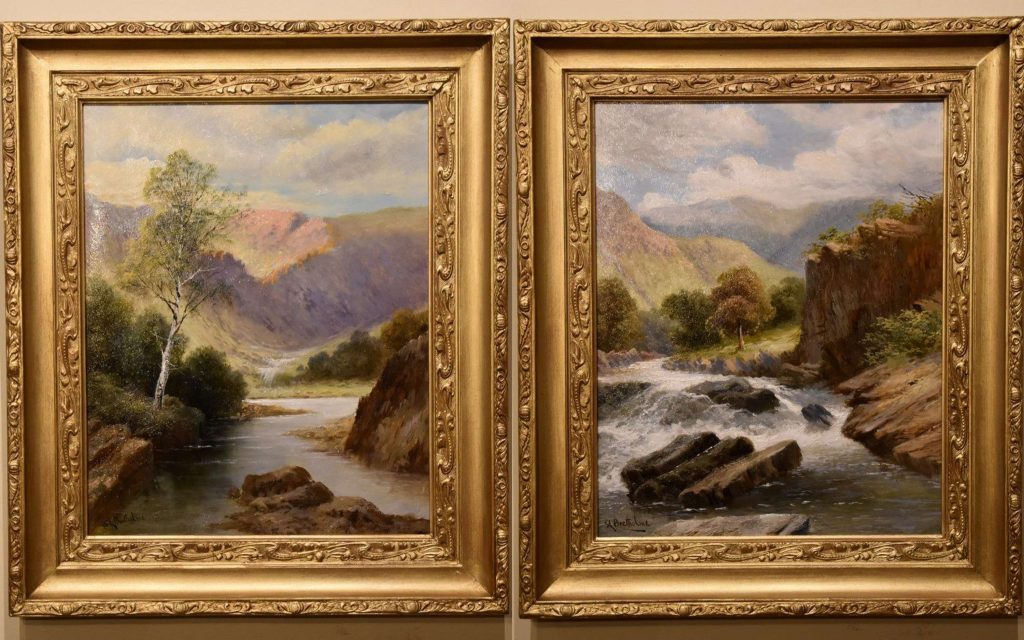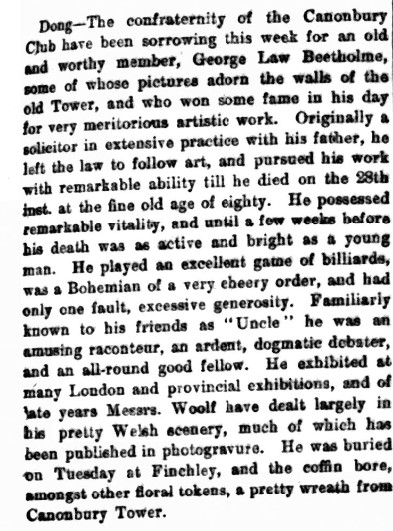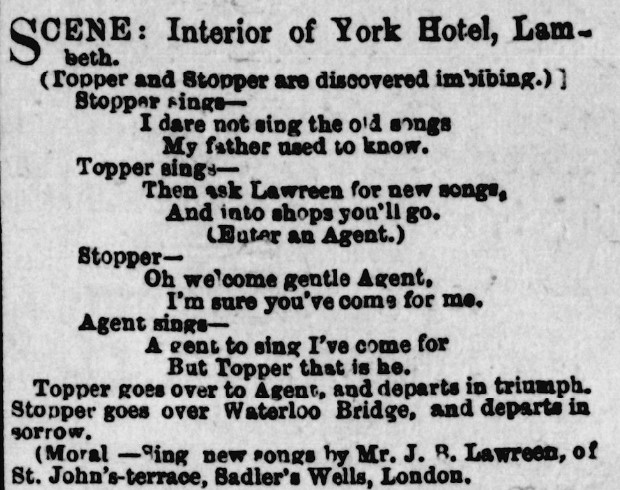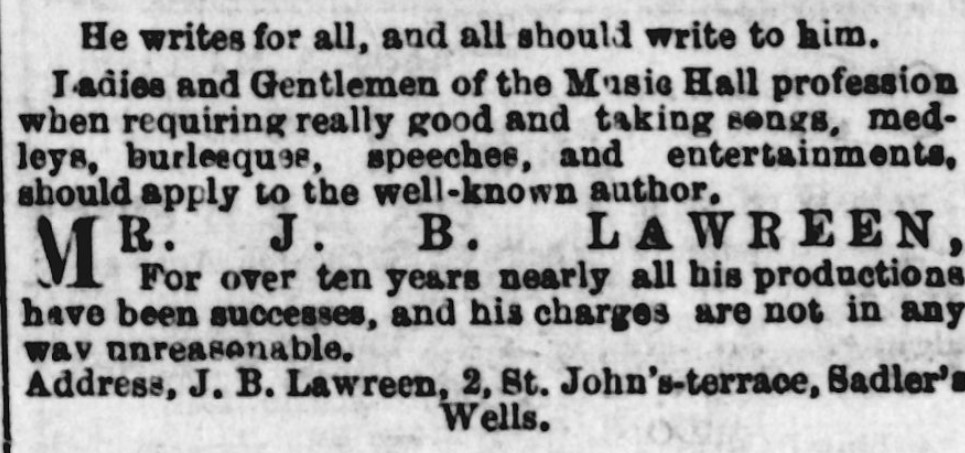One of the fun things family historians like to do is the One Name Study. You take an unusual surname and find out everything you can about all the bearers of that name.
I have an interest (I’ll explain more later) in the very rare, and now, I believe extinct, at least in that form, name BEETHOLME. I randomly typed ‘Beetholme chess’ into Google and discovered that one of their number, George Law Francis Beetholme, was a published problemist.
#3 777 Chess miniatures in three 1908
Here’s one of his problems, a mate in 3 anthologised by the very interesting E Wallis (the subject of a future Minor Piece) in his self-published collection. I don’t know where or when it was first published: if you know, do get in touch.
Beetholme is an area of Keswick, in the Lake District, and for centuries the name was common in nearby Kendal, often in variants such as Beethom. Our interest starts with John Law Beetholme, who was born in Liverpool, but moved to London where he worked as a solicitor. His eldest son, George, born in 1826, originally worked in his father’s legal practice, but, in a radical change of career, decided to become an artist. His paintings, very collectible today, were landscapes, often featuring mountains, rivers and waterfalls.

This pair of highland river scenes is, at the time of writing, on sale for £1750.
I don’t know whether or not he was a chess player, but, according to his obituary, he played an excellent game of billiards.

His only child, a son, George Francis Law Beetholme, born in 1857, was, like his father, an artist. It was he who appears to have been the chess problemist. Here’s a mate in 2 from 1882, which was reprinted in the Adelaide Observer a few weeks later, so it must have been quite highly thought of.
#2 The Illustrated London News 11 Feb 1882

Sadly, there’s not much more to say. Perhaps he was already in poor health: five years later he died at the age of only 30. The cause of his death was given as Phthisis (tuberculosis) and Morbus Cordis (heart disease).
I’ve only been able to find one other problem, published later in 1882, though there may well be others around somewhere. There are a lot of duals involving discovered checks with the knight in some variations, which perhaps wouldn’t be acceptable today.
#2 The Illustrated London News 9 Sep 1882
George Law Francis Beetholme, then, was very much a Minor Piece in the world of chess problems: perhaps even, you might think, a pawn. A promising career cut short by ill health, I suppose.
You might be wondering about my interest in the Beetholme family. George the artist had a brother named John, born in about 1839, who also lived a bohemian life following artistic pursuits, although he used a pen rather than a paintbrush.
Using the nom de plume J B Lawreen (sometimes J Beetholme Lawreen) he was, from about 1869 onwards, a writer of comic sketches and sentimental music hall songs.

In the same business, then, as Noel Johnson, except that he wrote the words while Noel composed the music. There’s no evidence that they ever collaborated.

In 1879 he married a dancer named Emily Willis, but the relationship didn’t last long and he later had an affair with Mary Elizabeth Bonsor, born in 1862, who had been orphaned at the age of only 3 when, a few weeks after her mother’s death, her father, in a fit of despair, took his own life. Two children were born: a son named John, and a daughter, whose name was registered as Alice, but who was later known as Lilian or Lily. In 1924 Lilian married a 63 year old widower, John Judd Abrahams: they had two sons. One of their grandsons, Steve Abrahams, who now lives in Tonbridge, has been researching his family history.
Steve has a strong DNA link with me which suggests we’re somewhere in the region of 4th cousins. I know from my shared links that it concerns my maternal grandmother’s family, and he knows from his shared links that it concerns his paternal grandfather’s family. There’s no obvious connection from our family trees so it’s a question of identifying a point where one of my relations and one of his relations might have been in the same room at the same time.
One possible scenario is this. John Judd Abrahams was born on 31 December 1860 in Gillingham Street, very near Victoria Station. According to both birth and baptism records his parents were David Abrahams and Ann Judd, who had married in Brighton in 1855. David was a servant, presumably working in hotels or boarding houses, and it’s quite likely Ann was in the same industry. Unfortunately the relevant page from the 1861 census, which might have been very informative, is lost, but there’s no indication that David and Ann spent any time together after their marriage, or that they had any (other) children. Steve also has no Abrahams DNA connections going any further back, so it’s plausible that John’s father was someone staying at or visiting a boarding house near Victoria Station. The relevant branch of my family was, at that time, mostly in the Northamptonshire village of Croughton, but there’s one possibility.
My great great grandfather Robert Padbury (he changed his name from Badby) had a brother named William (born in 1831) who served in the 97th Regiment of Foot. He was in Canada in 1856, and in India for the Indian Mutiny in 1857-58. On 1 June 1860 he was transferred to Madras. Might he have been in London a few months before that date awaiting instructions? Might he have travelled from India by boat, and then to London by train? He wouldn’t have arrived at Victoria Station, which only opened in October 1860. Might he have been in England on leave? Might he have been staying in a boarding house in central London and looking for a good time? I don’t know: I wasn’t there: but this theory would make Steve my 3rd cousin once removed, which would be about right. It would also make the short-lived problemist George Law Francis Beetholme the paternal 1st cousin of the wife of my 1st cousin 3x removed.
(Just to conclude William’s story, he returned from India, marrying in 1864 in Croydon, served by regular trains from Victoria, and fathering two daughters, one of whom died in infancy. )
Join me again soon for another story of a chess family with an unusual surname.
Problem solutions: click on any move to play them through.
Sources and Acknowledgements:
ancestry.co.uk
findmypast.co.uk
Wikipedia
Steve Abrahams
Yet Another Chess Problem Database (yacpdb.org)
ChessBase

